Significance
Sometimes referred to as Wenchang Temple, Lantian Academy is the oldest of the three major historic academies of Nantou County (the other two being Dengyin Academy in Caotun Township and Mingxin Academy in Jiji Township). Lantian Academy was originally set up as a school for the local indigenous people, but later began to take on Chinese settlers as well as indigenous residents, at which point it was dubbed the Nantou Yixue Academy. The school played a crucial role in the development of literacy and scholarship in the area. The academy has two main buildings—the main hall, with altars enshrining Lord Wenchang (the God of Culture and Literature) and Confucius, and the rear hall, overseen by Phoenix Hall, a Taoist sect which also worships Confucius. A closer look into the history of Phoenix Hall reveals that while this school of Taoism constructs independent temples, they have just as frequently established worship halls associated with local academies dedicated to Lord Wenchang. The integration of Lantian Academy and Jihua Hall (the rear hall) is a typical example of this practice. The most valuable artifacts of Lantian Academy are the ancient plaques that can be found in the main hall with the inscriptions Heavenly Lord Wenchang (tiānshàng wénhéng), A Civilized Ambience (wénmíng qìxiàng), and Venerate Literature (zòukǎi chóngwén). The artifacts exemplify the unique features and values of the temple.
History
Since Nantou is a remote mountainous area of Taiwan, it remained fairly inaccessible for the better part of the Qing Dynasty (1644 – 1912) and very few educational resources existed in the region. The area did not see much development until halfway through the dynasty, when settlers began to venture into the mountains. In 1831, the first academy in the area, Lantian Academy, was established. During the Japanese colonial period (1895 – 1945), the Academy was appropriated as a dormitory for the Nantou Public School, which taught the Japanese curriculum to local residents. The name Lantian Academy came from a traditional Chinese belief that “students can be nurtured, like trees, until they grow to surpass even their teachers.” In 1864, Lantian Academy was relocated to what is now Lantian Street in Sanmin Village. During a major urban planning project in 1911, the Academy was once again moved to its current location on Wenchang Street in Chongwen Village. The building has since undergone quite a number of renovations; the exterior today is the result of the renovation conducted in 1957. In 1999, the powerful Jiji earthquake severely damaged Lantian Academy, tilting half of the building and causing some parts to collapse entirely. Major repairs to restore the academy to its previous condition were completed in 2003. With the advent of universal public education, the academy lost its traditional role in the area, and today only a small number of students spend time studying there. Worship-related ceremonies are still held at the Academy. At the back of the Academy grounds stands a worship hall for Phoenix Hall, a popular Taoist denomination. The Ministry of the Interior has classified Lantian Academy as a Class Three National Historic Landmark.
Special Features

1The Academy PlaqueIn front of the main hall hangs an ancient plaque with the characters for Lantian Academy carved on it. The plaque was made in 1833 and features a blue background with words imprinted in gold. It is made of wood and measures ninety centimeters in length and sixty-six centimeters in width. The center section of the plaque is a flat tablet measuring sixty-two centimeters in length and thirty-four centimeters in width. The plaque is inscribed with the phrase Reconstructed In the Third Year of the Reign of the Tongzhi Emperor (1864) and Relocated in the Fifth Year of the Taishō Period (1916). The inscription at the bottom of the plaque notes that it was “raised in the presence of gentlemen (scholars).” Unfortunately, the plaque was once vandalized with paint. It was subsequently repaired using traditional clay, mineral pigments, metal polish, and Suzhou-style color painting techniques. The plaque that hangs in public today is a replica of the original.
2The Heavenly Lord Wenchang PlaqueOne of the most valuable artifacts in the academy is the 1842 Heavenly Lord Wenchang (tiānshàng wénhéng) plaque. It features a black background with words painted in gold. It is made of wood and measures 212 centimeters in length, eighty-eight centimeters in width, and 4.5 centimeters in depth. The words Made in the 22nd Year of the Reign of the Daoguang Emperor (1842) are carved at the top of the plaque. At the bottom is the attribution the reconstructed Lantian Academy was built in the presence of gentlemen (scholars).
3The Civilized Ambience PlaqueAnother famous plaque of the academy is the Civilized Ambience (wénmíng qìxiàng) plaque, made in 1864. It features a dark red background with words also gilded in gold. It is made of wood and measures 212 centimeters in length, eighty-three centimeters in width, and six centimeters in depth. The inscription at the top notes that it was “made in the third year of the reign of the Tongzhi Emperor (1864)”, and the bottom, that “the reconstructed Lantian Academy was built in the presence of gentlemen (scholars).”
4The Venerate Literature PlaqueThe last of the three plaques is the 1865 Venerate Literature (zòukǎi chóngwén) plaque. It features a black background with words in gold. It is made of wood and measures 236 centimeters in length, ninety centimeters in width, and 6.5 centimeters in depth. The top of the plaque reads Commemorating a Safe and Successful Relocation of the Temple. The bottom notes that the plaque was donated by Ding Ri-jian, a successful scholar who passed the provincial government civil service examination in 1835. He once served as a county magistrate in Fongshan.
5The Screen Wall (zhàobì) and the Half Moon Pond A Screen wall (zhàobì) is strategically placed front of the entrance of the Sanchuan (Front) Hall to prevent evil spirits from entering. The wall also creates a greater sense of space. Within the courtyard is the Half Moon Pond, a semicircular pond commonly used in ancient Chinese schools as a safeguard against fire. The existence of such ponds led to the expression passing through the pond as a euphemism for new student matriculation. The statue of the common carp which can be found inside the pond is a reference to the famous Chinese proverb carp which swim upstream rise to become dragons (lǐyuèlóngmén), which in turn alludes to students overcoming the last hurdle—examinations—and being accepted into the school. On the sides of the pond are two beautiful banner pole bases (now holding streetlamps), which symbolize the successful passage of exams. In the past, families whose children passed the exams were permitted to raise celebratory banners. These elements are unique to academic temples.
A Screen wall (zhàobì) is strategically placed front of the entrance of the Sanchuan (Front) Hall to prevent evil spirits from entering. The wall also creates a greater sense of space. Within the courtyard is the Half Moon Pond, a semicircular pond commonly used in ancient Chinese schools as a safeguard against fire. The existence of such ponds led to the expression passing through the pond as a euphemism for new student matriculation. The statue of the common carp which can be found inside the pond is a reference to the famous Chinese proverb carp which swim upstream rise to become dragons (lǐyuèlóngmén), which in turn alludes to students overcoming the last hurdle—examinations—and being accepted into the school. On the sides of the pond are two beautiful banner pole bases (now holding streetlamps), which symbolize the successful passage of exams. In the past, families whose children passed the exams were permitted to raise celebratory banners. These elements are unique to academic temples.
6Qixian Gate The main entrance of Lantian Academy is not located in front of the building, but to the side. Inside the entrance is a uniquely shaped architectural element called the Qixian Gate. The rock-like “gate” with its black mirror in the middle serves to ward off evil spirits because it has no opening and no one can pass through it. Visitors must walk around the sides to enter the academy. The Qixian Gate is a rare architectural element, even for academies and temples.
The main entrance of Lantian Academy is not located in front of the building, but to the side. Inside the entrance is a uniquely shaped architectural element called the Qixian Gate. The rock-like “gate” with its black mirror in the middle serves to ward off evil spirits because it has no opening and no one can pass through it. Visitors must walk around the sides to enter the academy. The Qixian Gate is a rare architectural element, even for academies and temples.
7Woodwork in the Main HallMagnificent and dignified woodcarvings adorn the main hall of Lantian Academy. The carvings, which are the primary decoration in the academy, bedeck large wooden objects such as the altar and the beams up in the eaves as well as finer elements such as the decorative brackets and supporting beams in the right side-room. The wood is carved using a variety of techniques such as relief sculpture, open work, and freestanding sculpture. The carvings generally depict flowers, birds, chīhǔ (dragon-like mythical creatures), books, and literary characters. Important themes include peace, wealth, good fortune, longevity, loyalty, filial piety, and righteousness.
8A Traditional Temple Layout Lantian Academy was constructed in a traditional compound layout (sānhéyuàn) with three buildings surrounding a central courtyard. The front façade is three kaijian in width (an ancient Chinese architectural unit denoting the openings between the pillars; three openings is considered a large building). The building is two jin in depth (an ancient Chinese architectural unit denoting the number of doors one must go through to reach the main part of the building). The academy originally had a fourth building, but the Sanchuan Hall was torn down during one of the renovations that took place after Taiwan’s retrocession. The Main Hall has a heavy double door in the middle, with openwork carved screens on either side. The hall was originally built as a simple hip roof with a single gable at the top with the decorative cylindrical post caps ornamenting the small posts that hung down from the roof. It was later rebuilt as an East Asian hip-and-gable roof, while the two buildings on the sides retained the simple hip roof design. The roof ridge of the Main Hall is crowned with a raised decorative frieze referred to as a Xi Shi Ridge (thus named because Xi Shi is one of the renowned four beauties of ancient China and the raised element is always intricately decorated). The ridgeline ends in a swallowtail design with a double gable-shaped roof truss. Although the two halves of the academy were built by different architects (common practice, since architects often held competitions on either side of a building to see who could create the better design), it is still surprisingly balanced, and the sides share similar patterns. The rear hall, added during a renovation, features an old joss paper burner called Jingsheng Pavilion, a screen wall, the Half Moon Pond, the Sacred Dragon Pond (another semi-circular pond), a replica of traditional stone pillars (huábiǎo), stone tablets, the Yixin Pavilion, and an artifacts gallery.
Lantian Academy was constructed in a traditional compound layout (sānhéyuàn) with three buildings surrounding a central courtyard. The front façade is three kaijian in width (an ancient Chinese architectural unit denoting the openings between the pillars; three openings is considered a large building). The building is two jin in depth (an ancient Chinese architectural unit denoting the number of doors one must go through to reach the main part of the building). The academy originally had a fourth building, but the Sanchuan Hall was torn down during one of the renovations that took place after Taiwan’s retrocession. The Main Hall has a heavy double door in the middle, with openwork carved screens on either side. The hall was originally built as a simple hip roof with a single gable at the top with the decorative cylindrical post caps ornamenting the small posts that hung down from the roof. It was later rebuilt as an East Asian hip-and-gable roof, while the two buildings on the sides retained the simple hip roof design. The roof ridge of the Main Hall is crowned with a raised decorative frieze referred to as a Xi Shi Ridge (thus named because Xi Shi is one of the renowned four beauties of ancient China and the raised element is always intricately decorated). The ridgeline ends in a swallowtail design with a double gable-shaped roof truss. Although the two halves of the academy were built by different architects (common practice, since architects often held competitions on either side of a building to see who could create the better design), it is still surprisingly balanced, and the sides share similar patterns. The rear hall, added during a renovation, features an old joss paper burner called Jingsheng Pavilion, a screen wall, the Half Moon Pond, the Sacred Dragon Pond (another semi-circular pond), a replica of traditional stone pillars (huábiǎo), stone tablets, the Yixin Pavilion, and an artifacts gallery.
Reminders
In compliance with environmental protection policies, Lantian Academy no longer permits the burning of joss paper or the use of votive candles. Visitors may burn incense to pray for blessings and to worship the gods. The academy is open daily from 6:00 a.m. to 9:00 p.m.
Panoramic
Directions